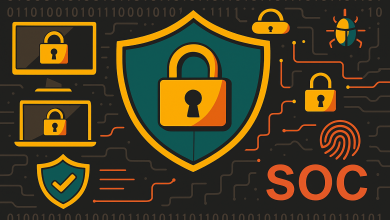
We’ve all come across the term ‘dark web’ sometimes in our lives. Whether it’s in an article, news, or any discussion, the term has always fascinated us at some point. However, it’s not something that one should mingle with so carelessly.
What is the Dark Web?
To understand the term dark web, we need to know first about ‘Deep Web.’

Surface Web/ Open Web
The internet that we scroll daily is known as the ‘Surface Web.’ This surface web also known as open web looks like it contains a plethora of content.
However, it’s only 5% of the total internet. Surprisingly, this is true, and we’re able to access numerous websites including social media platforms, via different web browsers easily. However, we’re concerned with the dark web, which is a part of the deep web.
Deep Web
The deep web consists of almost 90% of the total internet content. It’s just like the iceberg submerged under the water that wasn’t visible to the Titanic. It’s so large that there’s no estimate of the number of websites opened or running at the same time.
The deep web includes databases that are connected publicly or privately. In addition, there are intranets for enterprises, government institutes, etc. The deep web isn’t something hidden, rather, it’s accessible.
However, you’ll need access to certain websites. Most of the pages on the deep web are safe to browse, if you can, and pose no threat.
The Dark Web
The dark web, as highlighted, is a part of the deep web. However, the sites featured in the dark web aren’t indexed and can’t be accessed with your regular browsers. It’s a concealed portion due to the security risks it carries.
The reason it’s called the dark web is because of the activities that occur on it. Although legal parties have also used it for some legitimate purposes, the maximum activity occurring on it is illegal and criminal-related.
These activities include drug trading, trafficking-related activities, cybercrimes, etc. which is why it’s not recommended to surf it without any need. Moreover, those surfing the dark web take extreme precautions, including IP masking, to avoid being hacked in any manner.
What does Dark Web Monitoring mean?
As evident from the name, dark web monitoring is related to searching and monitoring the information available on the dark web. The information under focus can be stolen, leaked, compromised, etc. regarding any individual or organization in any manner.
This information is shared on the dark web for various reasons, including blackmail, and extortion, to show off one’s skill in terms of hacking and compromising information hubs. Cyberattacks are used to achieve this goal, which is why it’s not recommended to surf this area of the internet without any safety measures.
Why is Dark Web Monitoring Important?
Although there’s little to no chance of deleting leaked information from the dark web, using dark web monitoring tools is beneficial in several ways, including:
Continuous Monitoring
By opting for dark web monitoring, companies and individuals can protect their data from compromises. This is done by taking precautions and strengthening security protocols to ensure that any breach attempts are mitigated.
This can also be done by using secure internet from companies like Xfinity since they ensure to offer robust safety measures. You can get a plan for individual or company use by calling on Xfinity phone number easily.
Risk Assessment
Using dark web monitoring tools, companies can estimate the risks and threats that their current security protocols face. Here, protocols like threat hunting and threat intelligence (explained below) work effectively as they provide information on the potential threats the company needs to be prepared for.
Data and Stakeholder Protection
Dark web monitoring also helps protect users, individuals, and companies, from potential data leaks and breaches. However, it’s important since data breaches can lead to leaking stakeholder information, which can ultimately lead to drastic consequences.
How Does Dark Web Monitoring Work?
The dark web monitoring works by incorporating some of the major cyber protection protocols as follows:
Threat Intelligence
This protocol concerns identifying potential threats, identifying the extent of these threats, and then coming up with the right response strategy for the said threat.
Threat Hunting
This is also similar to threat intelligence; however, it’s concerned with the entities that are acting behind an identified threat. Hence, it’s important to know since the company can only initiate an investigation in case any malicious activity is found.
Security Integration
This protocol is concerned with how security practices can be formulated according to the threats identified. Using this, the company/ individual can determine how they can be integrated within the existing security of the organization.
Incident Response
This is an important protocol since it’s concerned with how the company should approach a breach. It concerns how the breach has occurred, how it affects the security of the company, and how the security protocols should work in order to eliminate the threat. In addition, it concerns how the company should minimize future instances whilst ensuring that data isn’t compromised in any manner.
Closing Thoughts
Dark web monitoring is a huge domain and requires immense attention from companies that don’t want data compromises. However, to act upon using its protocols, companies need to hire cybersecurity professionals who would mitigate breach instances in every way.





